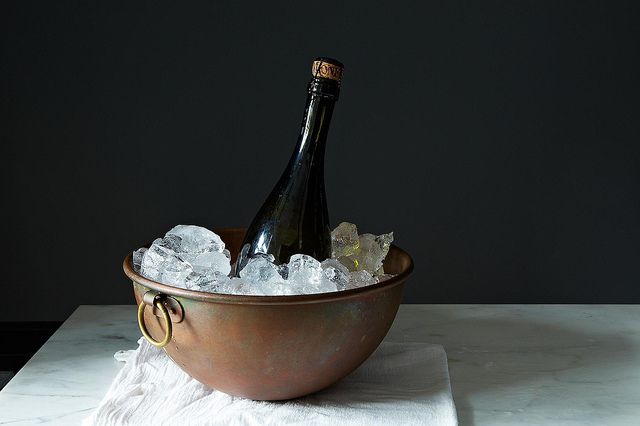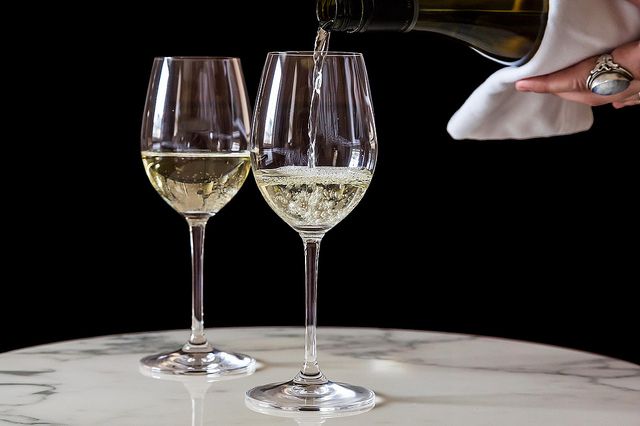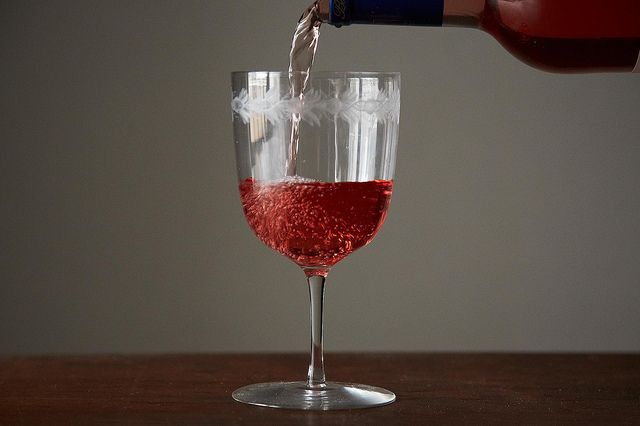We may have food down cold, but wine? This is where we'll conquer it. Join us; we don't want to drink alone.
Today: Why, when you're hot, coldest is not always best -- and how to keep cool with wine.

There’s an old story about the a traveler lost in the woods on the hottest day of the year, getting more exhausted by the minute. He happened upon a hut and knocked on the door, then asked the old woman who'd answered for a glass of cold water.
“I don’t have any cold water,” she said, “but come inside and rest a while, and I’ll give you a cup of hot tea.”
“Hot tea?” the traveler asked incredulously. “How can you possibly expect me to drink hot tea on a day like this?” He turned around and huffed away back into the woods. This happened again and again, until finally, the traveler threw up his hands. Out of options, he went inside and sat down for tea.
By the time he had rested, cooled off, and had taken the time to sip his cup of tea, he was feeling refreshed and invigorated. You may not be lost in the woods, but you'll be just as surprised to learn that coldest isn't always best, especially when it comes to wine. Here's what to do when you find yourself in a similar situation: hot, thirsty, and miles away from a nice, cool wine cellar.

Be mindful of the temperature of your wine.
Drinking ice water when your body is overheated is a shock to your system. The same thing happens with wine: when its temperature is too cold, the wine is almost numb. You have a harder time tasting and smelling a cold wine, which severely hampers the overall experience. Even though a cold glass of wine may sound at first like the best idea, it’s unlikely to be your most refreshing (or pleasurable) option. Both you and your wine are better off taking a breather for a few minutes first.
Serving wine at the “right” temperature.
There’s no shortage of information on the “optimal temperature” for serving wine: sweet and sparkling wines are served coolest, fuller-bodied reds are served closest to room temperature. But how many of us are really going to take the temperature of a glass of Shiraz to make sure it’s exactly 65 degrees? I’m personally more concerned that I get the very best experience out of any glass of wine in terms of aroma and taste. There’s a sweet spot on the thermometer that delivers those conditions, but it isn’t the same for each of us; in fact, it most likely varies with the individual. Find what works for you, and stick with it.

How do you chill?
Let’s say you’ve got friends coming over for dinner, and you bought a bottle of Sauvignon Blanc along with your other groceries. How do you chill it, so that it’s not too cold but still refreshing and crisp? If you’re in a mad rush, place the bottle in a bucket of ice and water; it will be ready to go in about five minutes. If you have slightly more time, you can pop the bottle in the freezer for a few minutes – 15 to 20 minutes should do the trick. If you’re moving at a leisurely pace, chill the bottle more gently in the refrigerator for 1 1/2 to 2 hours.
Heat is not your wine’s best friend.
Wine will spoil very quickly if it’s left outside -- in a box at your doorstep, say, or in the trunk of your car -- for more than a few minutes when the temperature is higher than 70 or 80 degrees. You’ll also want to avoid exposing wine to widely varying temperatures, including inside your own house or apartment. So keep it away from the stove or the air conditioner. If you don’t have a specialty wine refrigerator, store your unopened wine bottles away from direct sunlight. Look for a cool, dry place like a shelf in the hall closet.
What do you drink to keep cool? Tell us in the comments!
Photos by James Ransom




See what other Food52 readers are saying.